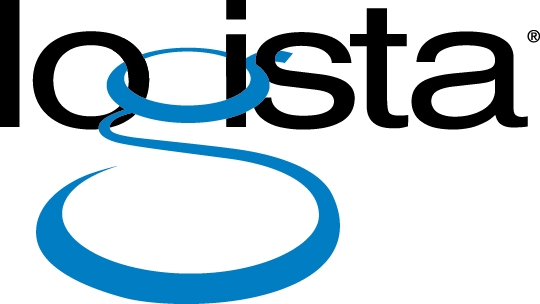Ever stayed late at the office and noticed just how many things are still running when no one’s using them? Desktop monitors glowing, printers humming, servers blinking in a corner closet—everything powered on, even if the workday ended hours ago.
It’s easy to overlook how much electricity an office eats up. But the truth is, energy costs quietly pile up from machines that are always on, even when they’re not always needed. The good news? You don’t need a huge renovation or a sustainability grant to start cutting those costs. A lot of it comes down to smarter choices—especially when it comes to how your office uses the cloud.
This blog walks through practical, real-world ways to shrink your energy bill by moving some everyday tasks to cloud-based platforms.

1. Office Hardware Is Draining More Than You Think
Most people don’t think twice about the technology they use daily—desktops, local servers, file storage drives. But all of these pull power around the clock. A server doesn’t get turned off at night. Desktop computers often stay in standby mode. Backup drives keep spinning whether anyone’s looking at them or not.
And then there’s the hidden stuff: server rooms that need cooling year-round. Backup batteries and redundant systems drawing energy just to be “ready.” In some small offices, on-prem hardware is responsible for a large chunk of the total electric bill.
Now, what happens if you take those functions like file sharing, backups and software hosting and move them to a cloud platform that doesn’t need to sit in your building?
You get to offload a lot of that energy use. And you still get the functionality you need.

2. Ditch the File Server: Move to the Cloud
One of the easiest ways to reduce your office’s hardware load is to move files to the cloud. Platforms like Google Drive, Dropbox Business, and OneDrive let your team access everything from anywhere, without relying on a power-hungry server sitting under someone’s desk or in a closet.
A lot of businesses keep old servers running for years past their prime just to store shared files. These machines often have limited usage during the day but run 24/7, constantly using power and taking up physical space.
With cloud storage, you only use what you need. There’s no need to overbuild. The platform grows with you; and if your storage needs drop, so does your footprint.
3. Virtual Desktops Can Replace Power-Hungry Machines
High-powered workstations use a lot of energy, especially when they’re left on around the clock. Many businesses invest in machines with serious horsepower just so staff can run a few programs or access a specific setup.
Instead of buying and powering heavy-duty desktops for everyone, more companies are switching to virtual desktops—cloud-hosted environments you can access from almost any device. With solutions like Windows 365 or Amazon WorkSpaces, even older or lightweight machines can connect to a full work setup hosted in the cloud.
This means you don’t have to rely on expensive, energy-hungry desktops. You can even extend the life of older machines, reducing both energy usage and e-waste.
And since virtual desktops can be automatically shut down or paused after hours, you’re not burning electricity when no one’s working.
4. Cloud Printing Cuts Energy Waste
Printers and copiers are some of the most power-hungry machines in the office. It gets worse when you have multiple devices, each tied to different departments, locations, or servers.
Print management software can centralize printing, track usage, and cut out unnecessary jobs, without relying on a local print server.
This allows for:
- Secure release printing: Jobs only print when the user is present.
- Rules-based printing: Color jobs get flagged, double-sided is the default, large print jobs get rerouted to energy-efficient devices.
- Usage data: See who’s printing what—and when.
The result? Fewer printers, smarter printing, and less power used overall.

5. Fewer People in the Office = Lower Energy Use
Cloud collaboration tools don’t just make work easier, they also give you the flexibility to run a leaner, smarter space.
Think about what happens when you start using Microsoft Teams or Google Meet instead of in-person meetings: people can work from home more often. Suddenly, your office doesn’t need as much lighting, heating, cooling, or device usage. Fewer people = less power consumption.
Even hybrid work setups, where employees are only in the office part of the week, create opportunities for energy savings. You can consolidate desks, reduce how many machines are running at once, and even consider scaling back on square footage.
6. Let Automation Power Things Down
One of the best parts about moving to the cloud is having better control over how your machines behave, especially after hours.
Using cloud-based device management you can enforce things like:
- Automatic sleep or shutdown after a certain period of inactivity
- Scheduled restarts or updates outside work hours
- Remote shutdown of idle devices
Even just setting a 15-minute auto-sleep rule on monitors and printers can make a noticeable dent in your energy bill over time.
Most businesses forget how many devices are left running simply because no one remembers to shut them down. Automation takes the human factor out of the equation.
7. Aren’t Data Centers Big Energy Users? Yes—but Here’s the Catch
It’s a fair question: if you’re moving everything to the cloud, aren’t you just shifting the energy load from your office to someone else?
Yes; but the difference is scale and efficiency.
Major cloud providers like Amazon, Microsoft, and Google run their data centers far more efficiently than any small business could ever hope to. They use advanced cooling systems, energy reuse processes, and massive investments in renewable power. In fact, many of them are already carbon-neutral or working toward running entirely on clean energy.
Compare that to a dusty office server room with outdated fans and minimal monitoring. Moving to the cloud means taking advantage of systems that are built from the ground up to use energy wisely.
So, while your workloads are still using electricity somewhere, the overall footprint is usually much smaller than keeping everything in-house.
Smart Changes Add Up
Cutting energy use in the office doesn’t always require dramatic moves. Sometimes, it’s about rethinking how work happens in the first place.
When you shift file storage, printing, meetings, and even desktops to the cloud, you’re not just reducing the number of devices in your building; you’re also gaining more control over when and how energy gets used. And you’re sidestepping the constant drain of legacy hardware that runs all day, every day.
The cloud isn’t a silver bullet but, when used with intention, it can help your office run leaner, waste less, and save money.
And at the end of the day, that’s power well spent.
About Logista Solutions
Logista Solutions is a nationally recognized leader in a broad range of technology management solutions. As one of the largest technology support providers in the U.S., Logista provides innovative and holistic solutions to help companies take control of their IT infrastructure and achieve better business outcomes. Popular services include Managed IT as a Service, VoIP and Unified Communications, Managed Print, Cloud Services and Asset Disposition.



